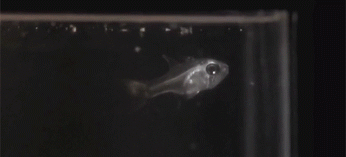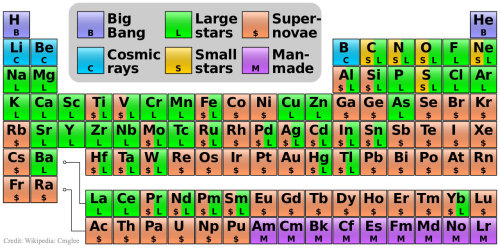Submit Your Questions Here Or Tweet #NPRSpaceJam.




On Tuesday, September 15th, at 5 p.m. ET, astronauts Serena Auñón, Cady Coleman, Samantha Cristoforetti, plus NASA chief scientist Ellen Stofan will be stopping by Skunk Bear HQ – and I’ll be asking them your questions live on Periscope and SnapChat (user: nprnews)!
Submit your questions here or tweet #NPRSpaceJam.
Cady Coleman has been to space three times, once spending 158 days aboard the International Space Station. While on earth, she set several endurance and tolerance records when she participated in tests of new equipment. She plays flute in Bandella, a musical group made up of astronauts. Here, I’ve depicted her zero-gravity hair-do.
Serena Auñón hasn’t been to space … yet. She was selected in 2009 as a member of the 20th NASA astronaut class. She has a bachelors degree in electrical engineering, a doctorate in medicine, and a masters in public health.
Samantha Cristoforetti is the first Italian woman in space, the woman who has stayed in space the longest (199 days) and the first person to brew espresso in space. She’s a fighter pilot in the Italian Air Force and speaks fluent Italian, English, Russian, German, and French.
Ellen Stofan is the Chief Scientist of NASA, advising the administrator on all things scientific. She is especially interested in the geology of other planets.
More Posts from Smartler and Others

Gotta love science ❤️









– Isaac Asimov, 1922 - 1992
When you try to get kids excited in STEM:

Shine bright like a blood strain
Net-The-Average-Boy (via not-the-average-boy)
Net the average boy?
Video: Bat’s tongue baffles researchers
by Hanae Armitage
Most nectar-feeding animals evolve special quirks (mainly of the tongue) that optimize their eating habits.
But for the groove-tongued bat (Lonchophylla robusta), evolution has dealt a bit of a strange hand. Instead of lapping up or siphoning liquid as other mammals do, this bat hovers over its food source and dips its long, slender tongue into the nectar, keeping contact the entire time it drinks.
Researchers filmed the bat with a high-speed video camera to try to decipher the special tongue mechanism, and watched as the fluid flowed upward along the bat’s tongue, against gravity, and into its mouth.
Today, researchers report in Science Advances that the conveyor belt–like mechanism may actually allow these bats to feed more efficiently from certain types of flowers…
(read more: Science/AAAS)


reindeer are the only mammals whose eyes are known to change colour, going from a gold in the summer, when the sun is a constant presence in the arctic, to a less reflective blue in the near perpetually dark winter months.
in dark conditions, muscles in your irises contract to dilate your pupils and allow more light into your eyes. when it’s bright again, the irises widen and the pupils shrink. the same thing happens in reindeer, but the arctic winter forces their pupils dilate for months at a time.
this constant effort to stay dilated ends up blocking the small vessels that drain fluid out of the eyes, which causes pressure to build up. this in turn compresses the collagen fibers that make up tapetum - a mirrored layer that sits behind the retina (seen in the second photo).
when compressed, these fibers in the eye reflect blue wavelengths of lights instead of the yellow which accompanies a typical spacing of the fibers, as in summer. (photos x, x)
What is a Supermoon Lunar Eclipse?

We’ve told you that on Sept. 27 a supermoon lunar eclipse will occur in the U.S. And much of the world, but what does that mean?
One important note, is that this event can be referred to in many different ways:
Supermoon Lunar Eclipse
Super Blood Moon
Harvest Moon Eclipse
Supermoon Eclipse
All slightly different names, but apply to the same spectacular event that will occur this weekend.
Since it’s rare that both a supermoon and an lunar eclipse occur at the same time, let’s break it down.
1) Supermoon

A supermoon is a full or new moon that falls closest to the fall equinox, and is at its closest approach to the Earth. This results in the moon appearing up to 14% larger in diameter.
2) Lunar Eclipse

A lunar eclipse occurs when the moon passes directly behind the Earth into its shadow. This can give the moon a red tint.
3) A Supermoon Lunar Eclipse!

The combination of these two events does not happen very often. In fact, since 1900 a supermoon lunar eclipse has only happened 5 times! The last time this occurred was 1982, and if you miss the event this year, your next opportunity won’t come until 2033.
This year, the event will be visible from the Americas, Europe and Africa on the night of Sept. 27. Here’s a full schedule of the supermoon eclipse:

If it’s cloudy in your area on Sept. 27, don’t worry! NASA Television will be providing a live stream of the event, so you can tune in and enjoy the show.
For more information and resources on the supermoon lunar eclipse, visit our page on NASA.gov.
Make sure to follow us on Tumblr for your regular dose of space: http://nasa.tumblr.com

Where Your Elements Came From
(via APOD; Image Credit: Cmglee (Own work) CC BY-SA 3.0 or GFDL, via Wikimedia Commons )
The hydrogen in your body, present in every molecule of water, came from the Big Bang. There are no other appreciable sources of hydrogen in the universe. The carbon in your body was made by nuclear fusion in the interior of stars, as was the oxygen. Much of the iron in your body was made during supernovas of stars that occurred long ago and far away. The gold in your jewelry was likely made from neutron stars during collisions that may have been visible as short-duration gamma-ray bursts. Elements like phosphorus and copper are present in our bodies in only small amounts but are essential to the functioning of all known life. The featured periodic table is color coded to indicate humanity’s best guess as to the nuclear origin of all known elements. The sites of nuclear creation of some elements, such as copper, are not really well known and are continuing topics of observational and computational research.
Travel Posters of Fantastic Excursions
What would the future look like if people were regularly visiting to other planets and moons? These travel posters give a glimpse into that imaginative future. Take a look and choose your destination:
The Grand Tour

Our Voyager mission took advantage of a once-every-175-year alignment of the outer planets for a grand tour of the solar system. The twin spacecraft revealed details about Jupiter, Saturn, Uranus and Neptune – using each planet’s gravity to send them on to the next destination.
Mars

Our Mars Exploration Program seeks to understand whether Mars was, is, or can be a habitable world. This poster imagines a future day when we have achieved our vision of human exploration of the Red Planet and takes a nostalgic look back at the great imagined milestones of Mars exploration that will someday be celebrated as “historic sites.”
Earth

There’s no place like home. Warm, wet and with an atmosphere that’s just right, Earth is the only place we know of with life – and lots of it. Our Earth science missions monitor our home planet and how it’s changing so it can continue to provide a safe haven as we reach deeper into the cosmos.
Venus

The rare science opportunity of planetary transits has long inspired bold voyages to exotic vantage points – journeys such as James Cook’s trek to the South Pacific to watch Venus and Mercury cross the face of the sun in 1769. Spacecraft now allow us the luxury to study these cosmic crossings at times of our choosing from unique locales across our solar system.
Ceres

Ceres is the closest dwarf planet to the sun. It is the largest object in the main asteroid belt between Mars and Jupiter, with an equatorial diameter of about 965 kilometers. After being studied with telescopes for more than two centuries, Ceres became the first dwarf planet to be explored by a spacecraft, when our Dawn probe arrived in orbit in March 2015. Dawn’s ongoing detailed observations are revealing intriguing insights into the nature of this mysterious world of ice and rock.
Jupiter

The Jovian cloudscape boasts the most spectacular light show in the solar system, with northern and southern lights to dazzle even the most jaded space traveler. Jupiter’s auroras are hundreds of times more powerful than Earth’s, and they form a glowing ring around each pole that’s bigger than our home planet.
Enceladus

The discovery of Enceladus’ icy jets and their role in creating Saturn’s E-ring is one of the top findings of the Cassini mission to Saturn. Further Cassini discoveries revealed strong evidence of a global ocean and the first signs of potential hydrothermal activity beyond Earth – making this tiny Saturnian moon one of the leading locations in the search for possible life beyond Earth.
Titan

Frigid and alien, yet similar to our own planet billions of years ago, Saturn’s largest moon, Titan has a thick atmosphere, organic-rich chemistry and surface shaped by rivers and lakes of liquid ethane and methane. Our Cassini orbiter was designed to peer through Titan’s perpetual haze and unravel the mysteries of this planet-like moon.
Europa

Astonishing geology and the potential to host the conditions for simple life making Jupiter’s moon Europa a fascinating destination for future exploration. Beneath its icy surface, Europa is believed to conceal a global ocean of salty liquid water twice the volume of Earth’s oceans. Tugging and flexing from Jupiter’s gravity generates enough heat to keep the ocean from freezing.
You can download free poster size images of these thumbnails here: http://www.jpl.nasa.gov/visions-of-the-future/
Make sure to follow us on Tumblr for your regular dose of space: http://nasa.tumblr.com
On a scale of Matt Damon

to Matt Damon

how well do you handle being stuck alone on an inhospitable planet
-
 settemarzo liked this · 6 years ago
settemarzo liked this · 6 years ago -
 masonnerd reblogged this · 7 years ago
masonnerd reblogged this · 7 years ago -
 masonnerd liked this · 7 years ago
masonnerd liked this · 7 years ago -
 pro-diversity reblogged this · 7 years ago
pro-diversity reblogged this · 7 years ago -
 duwy122-blog liked this · 7 years ago
duwy122-blog liked this · 7 years ago -
 treblewinners liked this · 8 years ago
treblewinners liked this · 8 years ago -
 breathing-balmy-zephyrs-blog liked this · 8 years ago
breathing-balmy-zephyrs-blog liked this · 8 years ago -
 lunaaaalo liked this · 8 years ago
lunaaaalo liked this · 8 years ago -
 sunlighttbabe liked this · 8 years ago
sunlighttbabe liked this · 8 years ago -
 chronicallywondering liked this · 8 years ago
chronicallywondering liked this · 8 years ago -
 lilacandgoooseberries liked this · 8 years ago
lilacandgoooseberries liked this · 8 years ago -
 rabbit-trolls liked this · 8 years ago
rabbit-trolls liked this · 8 years ago -
 igothurtdoingsafetydance liked this · 8 years ago
igothurtdoingsafetydance liked this · 8 years ago -
 the-golden-yet-weird-girl liked this · 8 years ago
the-golden-yet-weird-girl liked this · 8 years ago -
 blueclassydreamer liked this · 8 years ago
blueclassydreamer liked this · 8 years ago -
 hawkign-blog liked this · 9 years ago
hawkign-blog liked this · 9 years ago -
 caribbeansuomi-blog reblogged this · 9 years ago
caribbeansuomi-blog reblogged this · 9 years ago -
 max-elrifi-me liked this · 9 years ago
max-elrifi-me liked this · 9 years ago -
 thebutterflylionmovie reblogged this · 9 years ago
thebutterflylionmovie reblogged this · 9 years ago -
 thebutterflylionmovie liked this · 9 years ago
thebutterflylionmovie liked this · 9 years ago -
 pascooleo liked this · 9 years ago
pascooleo liked this · 9 years ago -
 starchildchampion-blog liked this · 9 years ago
starchildchampion-blog liked this · 9 years ago -
 notsobravelittlehobbit liked this · 9 years ago
notsobravelittlehobbit liked this · 9 years ago -
 borledtodeath reblogged this · 9 years ago
borledtodeath reblogged this · 9 years ago -
 starfleetsacademy reblogged this · 9 years ago
starfleetsacademy reblogged this · 9 years ago -
 bigpineapplehead reblogged this · 9 years ago
bigpineapplehead reblogged this · 9 years ago -
 bigpineapplehead liked this · 9 years ago
bigpineapplehead liked this · 9 years ago -
 vioneu liked this · 9 years ago
vioneu liked this · 9 years ago -
 blight-of-clouds reblogged this · 9 years ago
blight-of-clouds reblogged this · 9 years ago -
 furyroadpothole-blog reblogged this · 9 years ago
furyroadpothole-blog reblogged this · 9 years ago -
 queen-of-color reblogged this · 9 years ago
queen-of-color reblogged this · 9 years ago -
 anarmyofmantismen liked this · 9 years ago
anarmyofmantismen liked this · 9 years ago -
 random-shadow liked this · 9 years ago
random-shadow liked this · 9 years ago -
 whatisacomputer reblogged this · 9 years ago
whatisacomputer reblogged this · 9 years ago -
 whatisacomputer liked this · 9 years ago
whatisacomputer liked this · 9 years ago -
 you-gotta-be-free liked this · 9 years ago
you-gotta-be-free liked this · 9 years ago -
 rexetin liked this · 9 years ago
rexetin liked this · 9 years ago -
 mellifluouyllium reblogged this · 9 years ago
mellifluouyllium reblogged this · 9 years ago -
 mellifluouyllium liked this · 9 years ago
mellifluouyllium liked this · 9 years ago -
 jellyohh liked this · 9 years ago
jellyohh liked this · 9 years ago -
 whydotheycallmedarren reblogged this · 9 years ago
whydotheycallmedarren reblogged this · 9 years ago -
 whydotheycallmedarren liked this · 9 years ago
whydotheycallmedarren liked this · 9 years ago -
 zmbqn liked this · 9 years ago
zmbqn liked this · 9 years ago -
 omgintrovert212 reblogged this · 9 years ago
omgintrovert212 reblogged this · 9 years ago